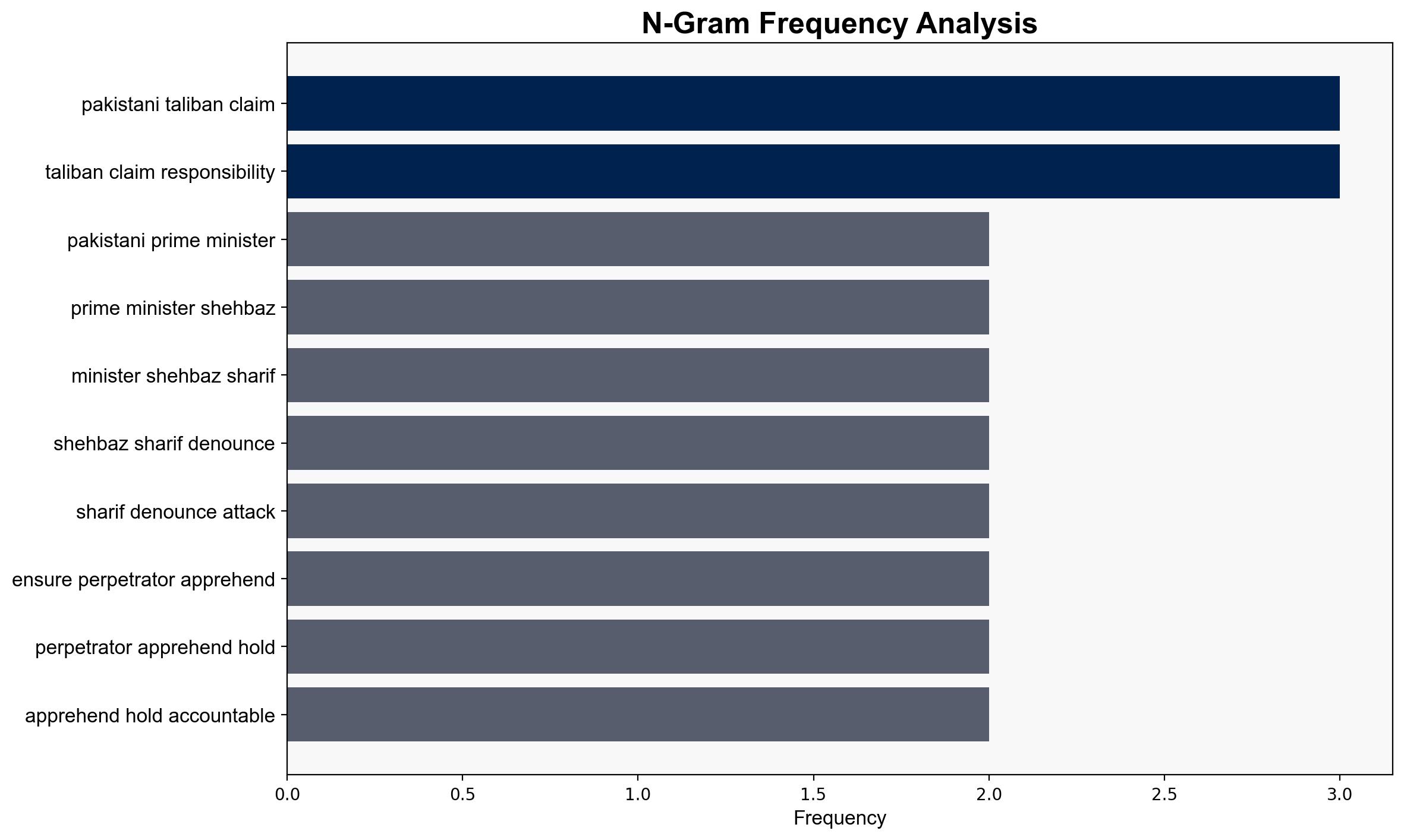Breaking Car bomb outside court in Pakistan’s capital kills five people – ABC News (AU)
Published on: 2025-11-11
AI-powered OSINT brief from verified open sources. Automated NLP signal extraction with human verification. See our Methodology and Why WorldWideWatchers.
Intelligence Report: Breaking Car bomb outside court in Pakistan’s capital kills five people – ABC News (AU)
1. BLUF (Bottom Line Up Front)
The attack outside the Islamabad court, claimed by the Pakistani Taliban, signifies a resurgence in militant activities in Pakistan, potentially exacerbated by cross-border tensions with Afghanistan. The most supported hypothesis is that the attack is part of a broader strategy by the Pakistani Taliban to destabilize the region and challenge the Pakistani government. Confidence Level: Moderate. Recommended action includes enhanced security measures and diplomatic engagement with Afghanistan to address cross-border militancy.
2. Competing Hypotheses
Hypothesis 1: The attack is a strategic move by the Pakistani Taliban to destabilize Pakistan and challenge the government, leveraging the current tensions with Afghanistan to gain support and resources.
Hypothesis 2: The attack is an isolated incident driven by internal factionalism within the Pakistani Taliban, with limited strategic intent beyond immediate impact.
Hypothesis 1 is more likely due to the coordinated nature of recent attacks and the explicit claim of responsibility by the Pakistani Taliban, indicating a broader operational strategy.
3. Key Assumptions and Red Flags
Assumptions: The Pakistani Taliban has the capability and intent to conduct coordinated attacks in urban areas. The cross-border tension with Afghanistan is a significant factor in the resurgence of militant activities.
Red Flags: The rapid claim of responsibility by the Pakistani Taliban could be a deception tactic to mask the involvement of other actors or factions. The timing of the attack amidst ongoing diplomatic tensions with Afghanistan suggests potential external influence.
4. Implications and Strategic Risks
The attack could lead to increased political instability in Pakistan, straining government resources and public confidence. It may also escalate military engagements along the Pakistan-Afghanistan border, risking broader regional conflict. Economically, sustained militant activities could deter foreign investment and tourism, impacting Pakistan’s economic recovery efforts.
5. Recommendations and Outlook
- Actionable Steps: Enhance intelligence-sharing and security coordination with Afghanistan to address cross-border militancy. Strengthen counter-terrorism operations within Pakistan, focusing on urban centers.
- Best Scenario: Successful diplomatic engagement with Afghanistan leads to reduced cross-border tensions and a decrease in militant activities.
- Worst Scenario: Escalation of cross-border conflict results in widespread violence and destabilization in the region.
- Most-Likely Scenario: Continued sporadic militant attacks with intermittent diplomatic efforts to manage cross-border tensions.
6. Key Individuals and Entities
Pakistani Prime Minister Shehbaz Sharif, Interior Minister Mohsin Naqvi, Pakistani Taliban, Afghan Government.
7. Thematic Tags
Regional Focus: South Asia, Counter-terrorism, Pakistan-Afghanistan Relations, Militant Activity
Structured Analytic Techniques Applied
- Causal Layered Analysis (CLA): Analyze events across surface happenings, systems, worldviews, and myths.
- Cross-Impact Simulation: Model ripple effects across neighboring states, conflicts, or economic dependencies.
- Scenario Generation: Explore divergent futures under varying assumptions to identify plausible paths.
Explore more:
Regional Focus Briefs ·
Daily Summary ·
Methodology





